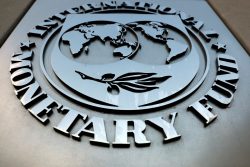Dear Editor,
The Oil and Gas sector is large and often individuals forget about the gas component of this sector. Gas can sometimes be the largest portion of the find and thus far Guyana has a lucrative 30-50 million cubic feet of natural gas per day (https://www.ecooilandgas.com/guyana-wants-to-bring-liza-gas-to-shore/).
This natural gas (methane or ethane) we own can be:
– compressed and stored in cylinders
– liquefied into liquefied natural gas (LPG)
– redirected into wells to maintain pressures and maintain output
– a feedstock for Petrochemical plants to make hydrocarbons for fuel, rubber, glass, paint etc.
As of today and the past six months, we have been flaring our natural gas at a reduced rate of 15 million cubic feet per day today (original rate being 80 million cubic feet per day). Flaring is basically setting the distilled natural gas afire into the atmosphere. Yes, increasing our carbon footprint and of course we are now, according to the Center for International Environmental Law, in the top 10 for gas flaring practices after commencement of production only six months ago.
This flaring has been ongoing from the beginning and Exxon’s number one excuse is the failure of equipment. If I were ExxonMobil and care about the environment, I would have acquired a new piece of the compressor machinery used to re-inject the gas into the well. It’s obviously a manufacturing problem at this point in time yet the company that relies so much on its set principles of gold standards seems hell bent on flaring Guyana’s gas more than fixing the actual problem.
Yes, flaring is done from time to time and the contract does state that ExxonMobil can engage in non-routine flaring exercises; such events can be during equipment maintenance or to prevent pressure build up. Is ExxonMobil really as efficient as it portrays itself to be, following international standards etc?
Our leaders in the Environmental Protection Agency (EPA) have chosen to continuously accept mediocrity. The excuse of flaring 80 million cubic feet vs 15 million is unacceptable and will not fill the jacket of rational Guyanese anymore. If the developer of Liza Phase One is inexperienced in fixing or locating a brand new compressor then you, Dr. Adams and team have to do some work and lobby for what’s right and just. Be proactive and offer solutions for the problems.
Flaring is a big deal, the environment is a big deal. Our electoral system has failed us to an extent and I plead with the EPA to not fail us further. Do not accept mediocrity, not with our environment.
Yours faithfully,
Dr. Josh Kanhai








